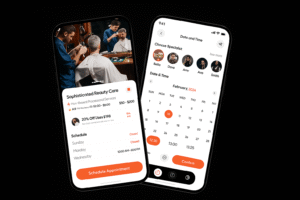Want more traffic to your blog? Use this ultimate WordPress SEO checklist for new bloggers in 2025 to improve your rankings and visibility—step-by-step and beginner-friendly.
Introduction
Just launched your blog and wondering how to get people to actually find it on Google?
SEO, or Search Engine Optimization, is the key to turning your WordPress blog into a traffic-generating machine. But if you’re new to blogging, SEO might sound confusing. The good news? It’s not that hard when you follow a simple checklist.
This WordPress SEO checklist for new bloggers will walk you through everything you need to do—from setup to content to ongoing optimization. No technical jargon. Just clear, actionable steps.
🧩 Why SEO Matters for New Bloggers
More organic traffic = more readers and subscribers
Free visibility without paying for ads
Better user experience = lower bounce rate
Higher authority and credibility
Now let’s get into the ultimate SEO checklist to start your blog strong!
✅ The Ultimate WordPress SEO Checklist for New Bloggers
🔹 1. Choose a Fast & SEO-Friendly Hosting Provider
Your hosting affects speed, security, and SEO. A slow site means lower rankings.
Recommended hosts:
SiteGround
Bluehost (beginner-friendly)
Cloudways (for speed)
Kinsta (premium)
🔹 2. Use a Lightweight and Mobile-Responsive Theme
Choose a theme that loads quickly and is mobile-optimized.
Recommended themes:
Astra
GeneratePress
Kadence
Neve
Speed + mobile performance = better SEO.
🔹 3. Install a WordPress SEO Plugin (Use Rank Math)
You need an SEO plugin to manage on-page SEO easily.
Top Choice: Rank Math (lightweight, powerful, and free)
Setup includes:
Adding your site to Google Search Console
Connecting Google Analytics
Creating a sitemap
Configuring meta tags and titles
🔹 4. Use Pretty Permalinks
Go to Settings → Permalinks and choose:
https://yourblog.com/sample-post/
Avoid ugly URLs like ?p=123. Clean URLs are better for SEO and users.
🔹 5. Submit Your Sitemap to Google
Your sitemap tells Google about your content.
Steps:
Install Rank Math
Go to Sitemap Settings → Enable Sitemap
Submit sitemap URL (
/sitemap_index.xml) to Google Search Console
🔹 6. Secure Your Site with HTTPS
Use an SSL certificate (most hosts offer it free). A secure site (https://) builds trust and is a Google ranking factor.
🔹 7. Optimize Your Site Speed
Key tools to improve speed:
WP Rocket (caching)
Smush or ShortPixel (image compression)
Cloudflare (free CDN)
Check performance with:
🔹 8. Do Keyword Research for Every Blog Post
Don’t guess what to write—research it.
Free keyword tools:
Ubersuggest
Google Keyword Planner
AnswerThePublic
AlsoAsked
Choose long-tail keywords like:
“Best SEO tips for food bloggers”
“How to grow a WordPress blog in 2025”
🔹 9. Write SEO-Friendly Blog Posts
When writing, remember to:
Use your focus keyword in the title, URL, and first paragraph
Use H1 for titles, H2/H3 for subheadings
Write naturally for humans, not just search engines
Add internal links to other posts
Use external links to credible sources
🔹 10. Craft SEO-Optimized Titles and Meta Descriptions
Rank Math lets you customize:
Title tags (70 characters or less)
Meta descriptions (under 160 characters)
Example:
Title: How to Start a Food Blog on WordPress (Step-by-Step 2025)
Meta: Beginner’s guide to starting a food blog using WordPress. Learn how to launch, grow, and monetize your food blog in 2025.
🔹 11. Use Categories and Tags Wisely
Organize your content so users and search engines can navigate easily.
Tips:
Use 1–2 categories per post
Avoid over-tagging (5–10 tags is enough)
No duplicate tags or categories
🔹 12. Add Internal Links
Internal links help Google understand your content and improve user time on site.
Example:
“If you’re ready to monetize, check out how to make money blogging with WordPress.”
🔹 13. Optimize Images for SEO
Rename image files (e.g.,
seo-checklist-wordpress.jpg)Add descriptive ALT text
Compress images (use Smush or ShortPixel)
Images help with Google Image Search and accessibility.
🔹 14. Create an XML Sitemap & Robots.txt File
Handled automatically by Rank Math, but double-check:
Sitemap:
/sitemap_index.xmlRobots.txt: block admin URLs and allow content
🔹 15. Make Your Site Mobile-Friendly
Use Google’s Mobile-Friendly Test. Over 60% of searches are mobile—so your blog must adapt.
🔹 16. Install Google Analytics and Search Console
Track what’s working:
Use Google Analytics
Monitor keywords in Google Search Console
You’ll know what posts are ranking and which ones need help.
🔹 17. Focus on Creating Quality, Evergreen Content
SEO is nothing without great content.
Tips:
Solve problems
Be original
Update old posts regularly
Use engaging headings and visuals
🔹 18. Build Backlinks (Gradually)
Backlinks help build authority. Start with:
Guest blogging
Answering questions on Quora or Reddit
Sharing your posts on social media
Creating helpful free resources
🙋♂️ FAQs – WordPress SEO Checklist for New Bloggers
1. Do I need to know coding to do SEO on WordPress?
Nope! With tools like Rank Math and page builders, everything can be done without code.
2. Is Rank Math better than Yoast SEO?
Rank Math offers more features for free compared to Yoast. It’s faster and integrates well with analytics and schema.
3. How long does SEO take to work?
SEO is a long-term game. Expect 3–6 months to see noticeable results—but it’s worth it.
4. Can I do SEO on a free WordPress.com site?
Free WordPress.com plans have limited SEO capabilities. For full control, use self-hosted WordPress (WordPress.org).
5. How often should I publish blog posts?
Consistency is key. Start with 1 post/week and focus on quality over quantity.
🏁 Conclusion
Starting a blog is exciting—but without SEO, no one will find it. With this WordPress SEO checklist for new bloggers, you now have a roadmap to start ranking, attracting traffic, and growing your blog the right way.
Don’t try to do everything at once. Take it step by step. Set up your site, optimize your content, and keep learning.














